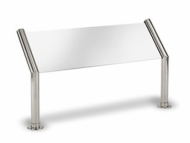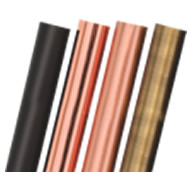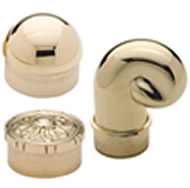In Japan, pizza is considered an upscale meal rather than the casual go-to greasy dinner most Americans see it as. One driving factor for these diverging opinions is the significantly different toppings and sauce that the two countries use on traditional pies. Gourmet pizzas can cost upwards of $50, but they are loaded with bizarre toppings that Americans would likely never dare to eat. Scott Oelkers, an American and president of Domino’s Pizza Japan, explains “the gourmet pizza outlets in American have nothing on our Japanese delivery menu.” Following are the top seven strangest Japanese pizza toppings we could find.
Those engaged in the recent American social media debate between the use of pineapple as a pizza topping would certainly be shocked to learn about Shirako or squid ink toppings!
Ikasumi
Ikasumi is the dark liquid that a squid releases when feeling threatened, but it is also a very popular ingredient in both Italian and Japanese dishes. While Americans may think this is the last thing they would want on their beloved pizza pie, the dark sauce is very appealing to seafood lovers in Japan. Ikasumi tastes mildly fishy and creates a visually appealing black hue to the pizza. This strange topping is not unique to pizza in Japan. Ikasumi is also frequently used in pasta, squid ink soup and spaghetti.
Kombu Seaweed
Various seaweeds are a crucial part of every Japanese person’s diet. It shouldn’t come as that much of a surprise then that many Japanese pizza pies come topped with Kombu seaweed. Kombu is a type of bull kelp that is leathery and tough. When used as a pie topping, the kombu is usually cooked in tsukudani fashion. The tough kelp is cooked and caramelized in a mixture of sake, soy sauce and sugar. Eventually, the kelp darkens and becomes soft and chewy. This seaweed is used as the basis of seasoning for most Japanese meals and is so highly regarded that it is often coined Japan’s “secret ingredient”.
Shirako
For any of us not native to Japan, Shirako is probably the most unusual food one could imagine utilizing as a pizza topping. Shirako is cod milt or fish sperm that is prepared by steaming, deep-frying or pan-frying. The finished product has a subtle fishy taste and soft and creamy interior. The Japanese consider Shirako an acquired taste and delicacy similar to escargot or caviar. This popular flavor is often used as a pizza topping because of Japan’s high regard for pizza as a special meal.
Eggs
Eggs are used in a variety of meals in Japan including on American-style hamburgers and pizzas. Okonomiyaki is a traditional batter made with eggs, flour, water, and a combination of other ingredients like meat, squid, shrimp, cheese or vegetables. The resulting mixture is commonly referred to as “Osaka soul food” or “Japanese pizza”, and it is most commonly prepared like a pancake. If you order Japanese pizza from a menu, then don’t be surprised if you are given a dish similar to this. In other instances, an egg is cooked atop the pizza and added as a delightful topping as seen in the image above.
Mayonnaise
Most Americans would be shocked to learn that mayonnaise is one of the most popular Japanese pizza toppings. Japanese companies utilize a different formula for their mayonnaise including apple vinegar, malt vinegar and egg yolks, which is trademarked by Kewpie. This formula makes Japanese mayonnaise a little sweeter than the American variety. Kewpie mayo is either applied to the dough with corn, used as the base of the tomato sauce or generously applied on top of the pie as shown in the image above. The topping is so popular that even Japan’s Domino’s Pizza lists the Kewpie mayo on its menu.
Miso
Miso is a form of fermented soybean paste that is often used in Japanese soups, sauces and desserts. This type of paste can be used in combination with garlic, oil and sugar to make a perfect Japanese pizza sauce, or it can be drizzled on top of the pie to flavor other toppings.
Hot Dogs
Hot dogs are extremely popular in America, so it’s pretty surprising that the Japanese decided to utilize these dogs on pizza pies before Americans did. Japan uses these popular dogs as toppings or part of the crust. The trend became so popular overseas that America’s Pizza Hut chain decided to launch its own version in 2015, but the pie never reached the same level of popularity as in Japan.
These incredibly strange pizza toppings and sauce combinations are far from the traditional American toppings like sausage, chicken, onions and classic pepperoni. Those engaged in the recent American social media debate between the use of pineapple as a pizza topping would certainly be shocked to learn about Shirako or squid ink toppings!
TAGS: pizza, food, travel, oddities




















